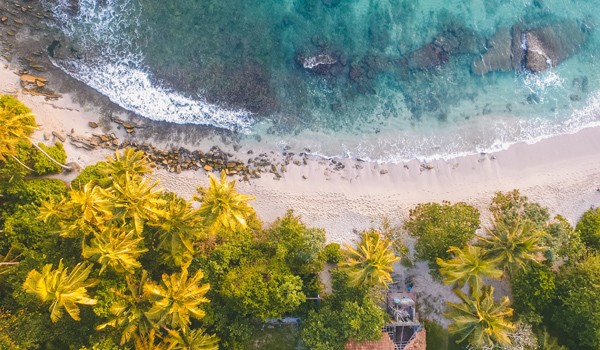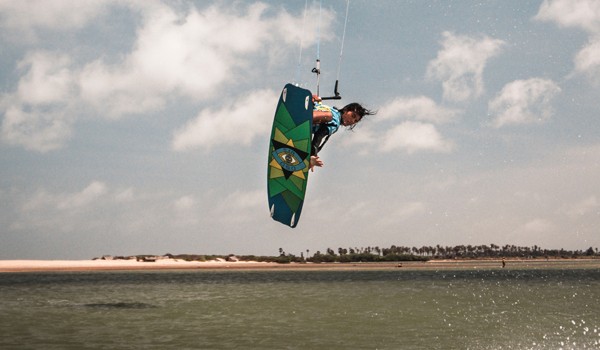While Sri Lanka’s west coast from the capital city Colombo down to the southern World Heritage city of Galle has been a popular holiday destination for travellers for many decades, the lesser-known western coastline stretching north from Colombo has become popular in recent times, attracting travellers seeking new experiences and barefoot luxuries.
Sri Lanka’s west coast has intrigued travellers for many decades; with favourite hangouts and lesser-known corners, there is something for everyone. The coastal line spreads as far as 100km to the south of Colombo and another almost 250km north of Sri Lanka’s capital. This diversity offers a range of options for travellers from water sports to beach stays to wildlife encounters. The capital of Colombo is central to the west coast. With a population close to one million, it remains the most active, fast-paced, modern and multicultural city in the country with skyrise towers, colonial heritage buildings, an upcoming food scene and quaint shopping. Read more here on Colombo. On the coast south of Colombo, streaks of sandy beaches sprawl alongside the Indian Ocean. Wadduwa and Beruwala are the most popular tourist destinations closest to the capital. Further down the western coast is Bentota, best-known for swimming and diving. It is also where the world-renowned architect Geoffrey Bawa's country home is placed.

Further south of Bentota is Hikkaduwa, a favourite hangout spot for backpackers and budget travellers. Although it has lost its old charm, the place remains popular. A number of small, dotted hideouts including Balapitiya and Boosa leads to UNESCO World Heritage city Galle, where west coast ends. While this part of the coast is generally sought after by holidaymakers for a quite beach stay, there are plenty of activities available from diving to snorkelling to water sports. Bentota and Hikkaduwa are the best places for such activities. The beaches on this coastline are generally busy with travellers, as it has been for many decades. To the north of Colombo is one of the most popular beach destinations for many travellers, Negombo. Being the closest beach to the international airport makes Negombo an easy place for overnight and longer stays.

While it is a busy town with plenty of options for accommodation, there is more to Negombo than a beach stay including its colonial heritage buildings, unique local life of a fishing community and cuisine that’s special to the area. Unlike the coastline south of Colombo, the northern coastline remains quiet and quirky and attractive to visitors with pecific interests. Kalpitiya, a small peninsular, is one of the interesting places up the coast. It has gained popularity with active holiday makers for kite surfing, snorkelling and deep-sea fishing from mid-October to March. The waters around Kalpitiya are great for whale watching and dolphin watching during this season. Unlike the south coast, the sightings are much closer to the shore. Apart from water sports, this is also a great area to experience the slow-paced life of the region and interact with the local communities.

The seashores are lined with boats and vessels for deep-sea fishing and the lagoon and inland water tanks provide succulent seafood throughout the year. Further north attracts mostly for wildlife enthusiasts. Wilpattu, the country’s largest national park, is situated just 35km form Puttalam, another small town on the coast. For more untamed wildlife experiences Mannar, further on from Wilpattu, is a good option. Read more on Wilpattu National Park here. (link) Climatic conditions on the west coast vary from the south to the north. The south receives a lot more rainfall and remains quite wet, experiencing a few dry months from December to February. As a result, this area looks lush and tropical with an average temperature of 28°C with warmer day times. The north of the west coast leading to Puttalam and Kalpitiya are a lot warmer with temperatures averaging over 30°C and more drier spells. Both regions are best from December to March when there is less rainfall.

While there is a good selection of accommodation available on the west coast, they differ vastly from area to area. Resort type accommodation is more popular towards the southern end of the west coast dotted by stylish upmarket, boutique properties. Colombo is largely a mix of heritage and resort accommodation with a few upmarket, boutique hotels. Negombo is mostly resort accommodation with both low to midrange options. Further up the coast, accommodation is mostly quaint with barefoot luxury. Sri Lanka’s west coast is best visited from mid-October to April when the rain begins to cease and drier climate couples with turquoise blue seas. This area can be included either at the beginning or at the end of the journey.

Here are sample itineraries featuring the West coast of Sri Lanka. Click below to read more about accommodation on the West coast of Sri Lanka or get in touch to receive a detailed, tailor made itinerary for your Sri Lanka holiday.
A one-week journey that covers some of Sri Lanka’s...
8 DAYS/7 NIGHTS
A Taste of Sri Lanka
Read MoreA leisurely paced holiday in Sri Lanka for familie...
13 DAYS/12 NIGHTS
Family Holiday Sri Lanka
Read MoreWith ancient Buddhist temples, the impressive Sigi...
15 DAYS/14 NIGHTS
Classic Sri Lanka
Read MoreDiscover Sri Lanka’s best surf breaks and beaches...
11 DAYS/10 NIGHTS
Surf Sri Lanka
Read MoreDiscover the lesser-known Sri Lanka. Exploring the...
19 DAYS/18 NIGHTS
Backroads Of Sri Lanka
Read MoreDesigned to showcase some of Sri Lanka’s best heri...
11 Days/ 10 Nights
Sri Lankan Escape
Read MoreA group tour of Sri Lanka for solo women traveller...
Contact us for next tour dates
Sri Lankan Discovery
Read MoreA private tour of Sri Lanka with a focus on nation...
20 Days/19 Nights
Wild Sri Lanka
Read MoreA private tour of Sri Lanka to experience its very...
19 Days/ 18 nights
Sri Lankan Food Trail
Read MoreA unique itinerary crafted around the works of wor...
19 Days/ 18 nights
Bawa & Beyond
Read MoreAmazing trip! We absolutely loved it. Sri Lanka is now a country we would definitely like to go back to and explore further.Thank you so much for all the work you did in putting the trip together for us. It was a great mix of places for us to get a good feel of the country. We will be encouraging all our friends to go to Sri Lanka.